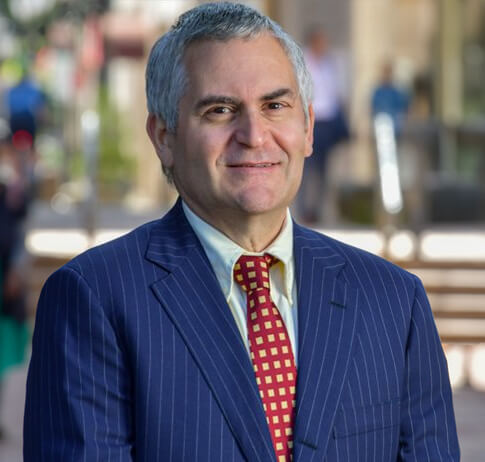ACE Act Would Accelerate Spending of DAF and Foundation Funds
Donor advised funds (“DAFs”) and private charitable foundations have long been used as private charitable endowments by donors. For that reason, DAFs and foundations have come under increasing scrutiny by the US Congress in recent years.
In creating a DAF or foundation, a donor receives an immediate tax benefit by way of a contribution deduction; however, the actual use of contributed funds by “active charities” can be delayed for many years. Under current law, foundations are generally required to spend 5% of their endowments each year for charitable purposes. DAFs do not have a minimum payout requirement.
The perceived problem with current tax rules is that DAFs and foundations are allowed to “hoard” funds, and therefore the flow of funds to accomplish direct charitable activities is substantially delayed. To remedy this perceived abuse, legislation was originally introduced in the Senate by Angus King and Chuck Grassley and has now been introduced in the House of Representatives by Congresswoman Chellie Pingree. This legislation, known as the Accelerating Charitable Efforts (“ACE”) Act, is designed to reform federal law to ensure funds donated to DAFs are made available to working charities within a reasonable period of time and provides incentives to speed up donation timelines. This legislation would also revise certain existing provisions of the Internal Revenue Code for private foundations to encourage larger annual payouts to working charities.
DAF provisions
DAFs were first introduced and used by community and religious-based charities (“sponsoring organizations”) in an informal manner to allow donors to create what were essentially private endowments within the charities. The community and religious charities allowed donors to make non-binding recommendations to appoint income and principal from their designated fund to other public charities. Over the years, DAFs have become increasingly popular, yet there was no formal recognition or regulation of DAFs by the Internal Revenue Code until 2006 when Congress enacted Code Sections 4966 and 4967. Currently, DAFs are widely used by public charity sponsoring organizations, including charities created by commercial investment advisors. Under current law, a donor can claim a charitable contribution deduction in the tax year a contribution is made to a DAF. Although such donated funds are irrevocably given to the sponsoring organization, a charity, the donors are permitted certain advisory privileges which would permit donations to other charities from time to time recommended by the donor. As distinguished from the rules governing foundations, there is no minimum distribution that needs to be made from a donor-advised fund and no deadline by which the DAF must be exhausted.
The ACE Act would establish three new categories for current and newly created DAFs: Qualified DAFs, Qualified Community Foundation DAFs, and Nonqualified DAFs. The new legislation would encourage DAFs to increase annual distributions to active charities and to shorten the time period for which funds can continue to be held in a DAF. The provisions of the ACE Act would apply for all contributions to DAFs after the date of enactment.
Qualified DAFs
Under the Act, a Qualified DAF is a DAF in which any advisory privileges of a donor with respect to any contribution (including any earnings) would end before the last day of the 14th taxable year beginning after the taxable year in which the contribution is made. Essentially this would require advisory privileges to cease over a 15-year period. Contributions to a Qualified DAF would be deductible only if the donor identifies a preferred organization to receive distributions of amounts contributed that have not been distributed before the end of the last day of the 15-year period. Contributions of Non-Publicly Traded Assets (assets for which market quotations are not available on an established securities market) would not allow the donor a charitable deduction until the sponsoring organization sells the contributed assets. The amount of such deduction would be limited to the amount of the gross proceeds received from such sale and credited to the donor’s DAF.
Any portion of a contribution to a Qualified DAF which is not distributed by the last day of the 15-year period to the preferred public charities or the default public charity would be subject to a 50% excise tax. In connection with establishing the category of Qualified DAFs, the Act modifies the contemporaneous written acknowledgment rules with respect to income tax charitable deductions. Such acknowledgments, which, under current law, are provided to donors to identify the property and amount of cash donated, would now require the DAF sponsoring organization to provide certification of the sale of a non-publicly traded asset, the amount of the gross proceeds received from the sale, and the amount credited to the DAF within 30 days of the crediting of the sale proceeds to a donor account.
Qualified Community Foundation DAFs
A Qualified Community Foundation DAF would be a DAF held at a “qualified community foundation” for which either (i) each individual with advisory privileges with respect to the DAF does not have advisory privileges over DAFs at the qualified community foundation with an aggregate value at any time in excess of $1,000,000 (indexed for inflation) or (ii) the DAF is established under an agreement that requires qualifying distributions from the DAF to equal at least 5% of the DAF’s value as of the last day of the preceding calendar year. A “qualified community foundation” is an organization (i) described in Internal Revenue Code Section 501©(3); (ii) which is organized and operated for the purpose of understanding and serving the needs of a particular geographic community that is no larger than four states by engaging donors and pooling donations to create charitable funds in direct furtherance of those needs; and (iii) which holds substantial assets (but in no case less than 25% of the sponsoring organization’s total assets) outside of its DAFs. For donations of non-publicly traded assets to a Qualified Community Foundation DAF, no charitable deduction would be allowed until the sponsoring organization sells the contributed assets. The amount of such deduction would be limited to the amount of the gross proceeds received from such sale and credited to the donor’s DAF.
In connection with establishing the category of Qualified Community Foundation DAFs, the Act would modify the requirements with respect to contemporaneous written acknowledgments issued to donors and would require certification of the sale of a non-publicly traded asset, the amount of the gross proceeds received from the sale and credited to the DAF, and a statement that the deductible amount of the contribution may not exceed the amount of such gross proceeds. The acknowledgment would have to be provided within 30 days of the date that the proceeds from the sale are credited to the DAF.
Nonqualified DAFs
A Nonqualified DAF is a DAF that is neither a Qualified DAF nor a Qualified Community Foundation DAF. For donors to Nonqualified DAFs, no charitable deduction would be allowed until the sponsoring organization makes a qualifying distribution from the contribution and earnings, and the amount of the deduction would be limited to the amount of the qualifying distribution. For donations of property other than cash to a Nonqualified DAF, no charitable deduction would be allowed until the sponsoring organization sells the property for cash and makes a qualifying distribution of the proceeds. Any portion of a contribution to a Nonqualified DAF which is not distributed within 50 years would be subject to a 50% excise tax.
The Act would modify the contemporaneous written acknowledgment provisions to require certification of the sale of non-cash property and the amount of cash received in the sale, that a qualifying distribution has been made from such contribution, the amount of the qualifying distribution, and a statement that the deductible amount of the contribution may not exceed the amount of the qualifying distribution. The acknowledgment would have to be provided within 30 days of the qualifying distribution.
Foundation Provisions
Administrative expenses paid to disqualified persons will no longer count in meeting the 5% minimum distribution test
Under current law, salaries and reimbursements paid to employees count as “qualifying distributions” for purposes of meeting the foundation’s minimum distribution requirement. Under the ACE Act, such payments will no longer qualify if paid to “disqualified persons.” Disqualified persons generally include substantial contributors to the foundation, family members, and certain other insiders. Payments to foundation managers who are not substantial contributors or related to substantial contributors are not included in this group. The provision would be effective for foundation taxable years beginning after December 31, 2021.
Distributions to DAFs from private foundations will no longer count in meeting the foundation 5% minimum distribution test
Under current law, distributions from a private foundation to a DAF count as “qualifying distributions” for purposes of meeting the foundation’s minimum distribution requirement because DAFs are generally treated as public charities for this purpose.
Under the ACE Act, distributions to a DAF will not qualify. However, distributions to a DAF sponsoring charity will still be considered qualifying distributions. Foundations will also be required to report on their annual forms 990-PF the amount and advisory information with respect to any distribution to a DAF. The provision would be effective for distributions made by the foundation after December 31, 2021, and for all returns required to be filed after December 31, 2021.
Certain contributions by DAFs will no longer be treated as public support for purposes of determining whether a charity meets the public support test
Charities that receive more than one-third of their support from “public” sources will qualify as public charities. Under current law, if a charity receives support from a public charity, including a DAF, that support is treated as public support for purposes of the one-third test. The ACE Act would generally treat distributions from a DAF as contributions from the person who created the DAF. If there is no identified creator of the DAF, the DAF would be treated as one person for purposes of the test. The provision would be effective for DAF contributions made in taxable years beginning after the date of enactment.
Exemption from investment excise tax for certain private foundations making significant qualifying distributions
Under current law, nearly all private foundations pay an excise tax on their investment income (generally interest dividends and capital gains) at a flat rate of 1.39%. The ACE Act would provide an exemption from this tax to any foundation for a year in which it makes qualifying distributions of 7% or more of net assets (other than assets used in its exempt function) valued as of the beginning of the year. Foundations will continue to be subject to the general rule that 5% of average net assets for a given year must be paid out on or before the end of the year following the valuation. The provision would be effective for foundation taxable years beginning after the date of enactment.
Exemption from investment excise tax for limited duration private foundations
The ACE Act would provide an additional exemption from the 1.39% excise tax to “limited duration foundations,” defined generally as foundations that will have a legal existence of 25 years or less as specified in the foundation’s governing documents. Foundations which make distributions to related foundations will not be eligible for the exemption. If the foundation makes distributions to related foundations or terminates after the 25-year period, a recapture of the avoided excise tax would be required. The provision would be effective for foundation taxable years beginning after the date of enactment.
Please consult your Withers attorney to discuss the potential impact of the ACE Act on your charitable planning.


